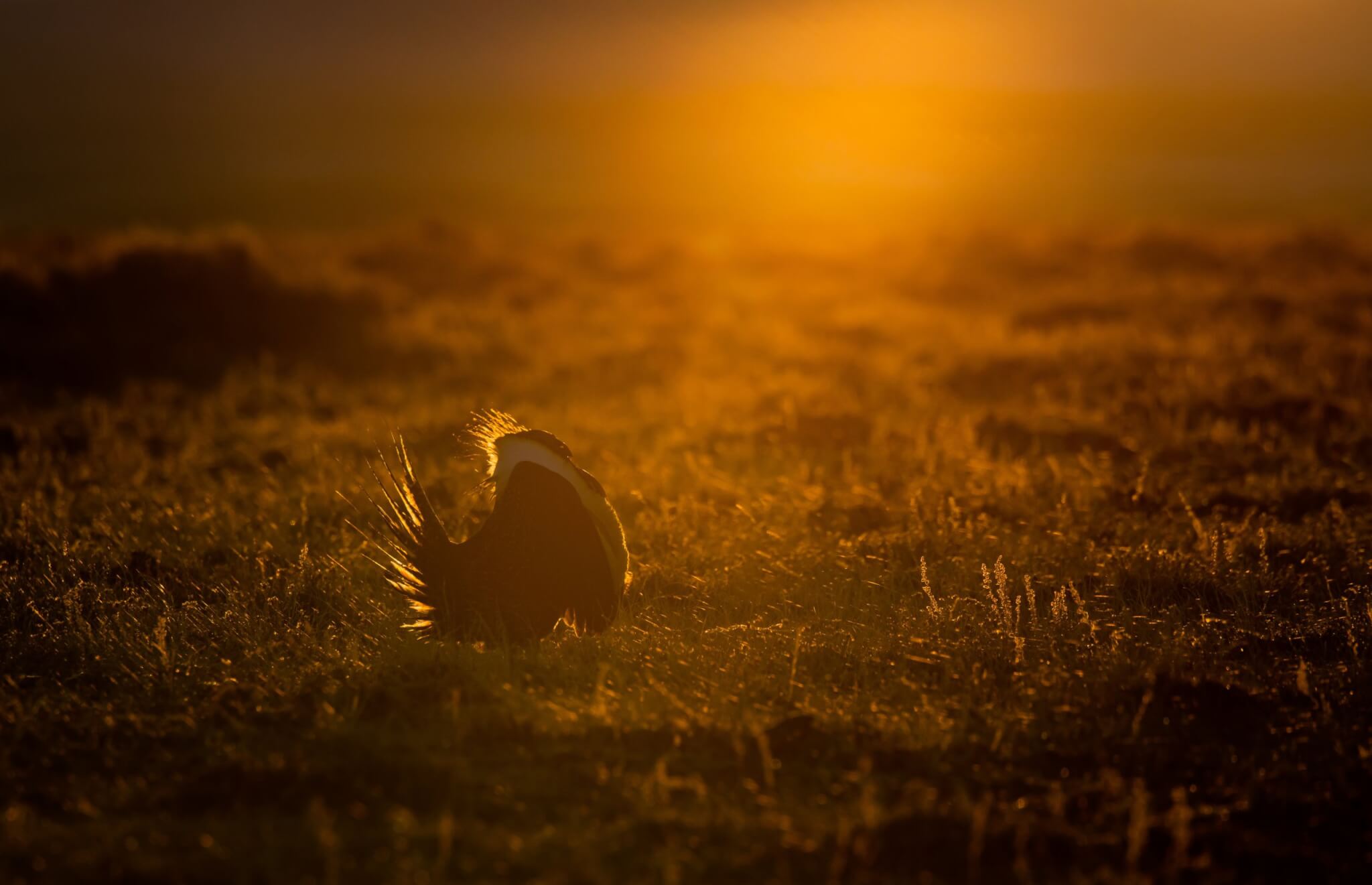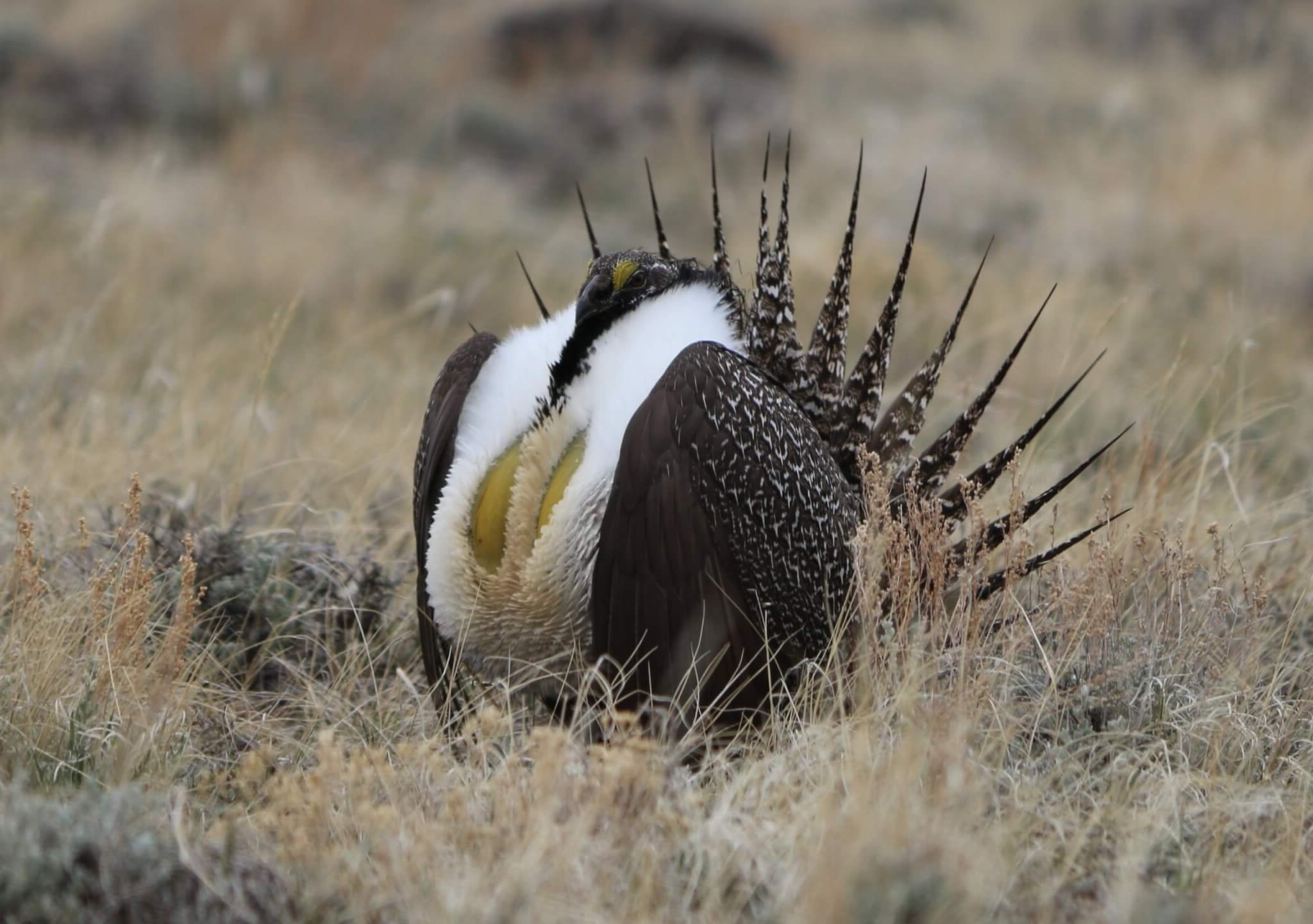
The Greater Sage-Grouse and the Sagebrush Plains of the West
Without Sagebrush there would be no Sage-Grouse
Ann Jandernoa
June 5, 2022
Lewis and Clark and the “Cock of the Plains” or the “Heath Cock”
The Sage Grouse was a new discovery. Lewis first observed sage grouse at the mouth of the Marias River on June 6, 1805. Lewis and Clark recorded their encounters with sage grouse in their journals as they traveled west.
These encounters covered a large area across the west. Starting from the mouth of the Marias River, traveling up Missouri to Camp Fortunate, then along the trail to Lemhi Pass, as well as along the Salmon River, working their way down the Clearwater River, and finally to the joining of two great rivers the Walla Walla River and the Columbia.
Lewis and Clark documented their encounters with the sage grouse, noting the abundance and distribution. Below is their description of the Sage Grouse.
“The Heath Cock or cock of the Plains is found in the Plains of Columbia and are in great abundance from the entrance of Lewis’s River to the mountains which pass the Columbia between the Great falls and Rapids of that river.”
“At the confluence of the Snake and Columbia Rivers on October 17, 1805, Clark killed “a Fowl of the Pheasant kind as large as a turkey. The length from his beeck to the end of its tail 2 feet 6-3/4 Inches, from the extremity of its wings across 3 feet and 6 Inches. the tail feathers 13 Inches long, feeds on grasshoppers, and the seed of wild Isoop,” which is now called sagebrush.”
Thus, we have a historical account of sage grouse range and abundance, both substantially diminished today.
Drawing from Lewis and Clark’s journal
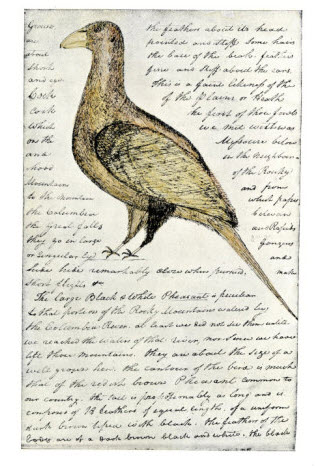
Sage Grouse, Centrocercus urophasianus
“Cock of the Plains” or “Heath Cock”

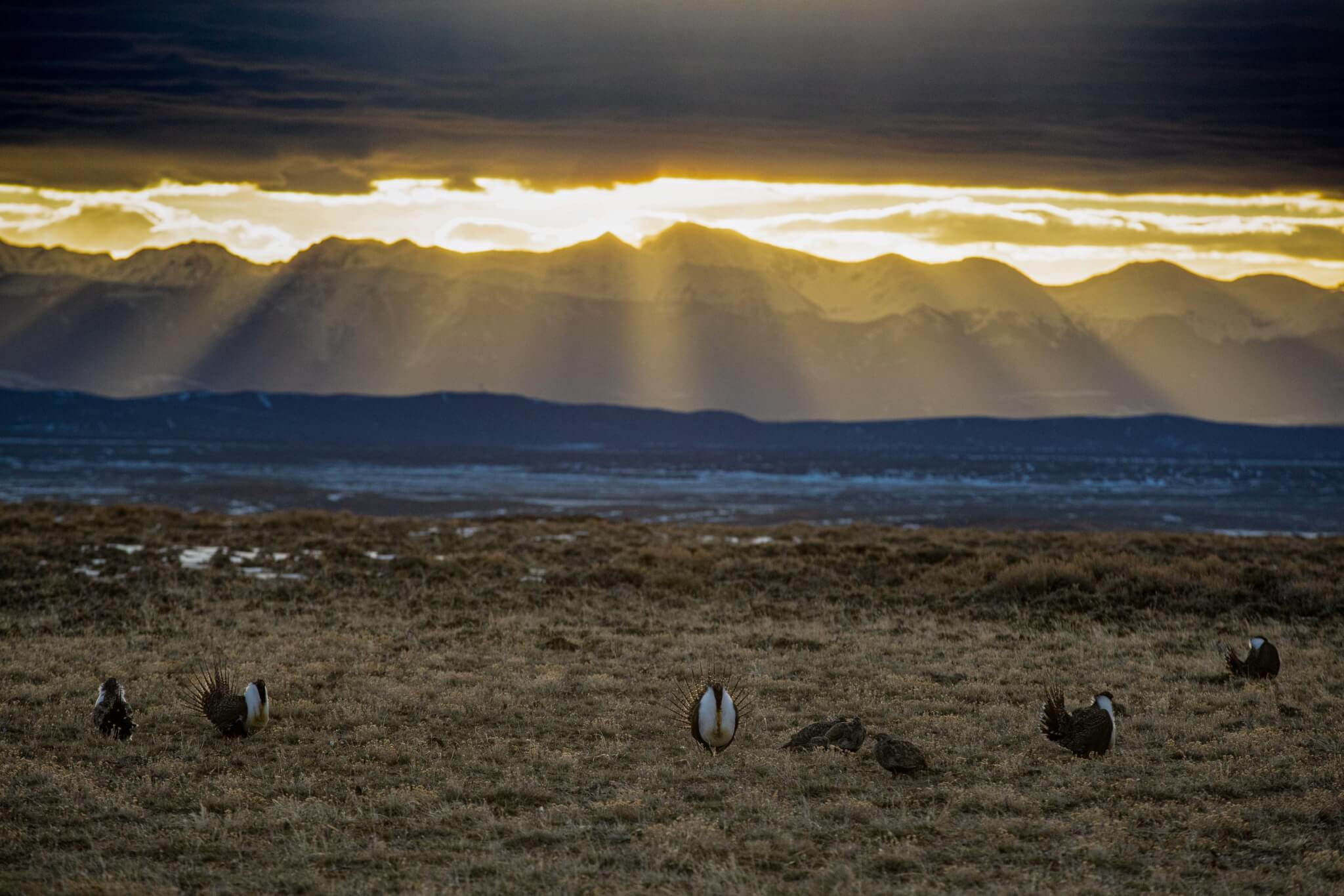
Sage Grouse lek at sunrise taken in Colorado in the wild
The Greater Sage-Grouse’s Range
Once, their range spanned 16 states and included the Canadian providences of Alberta, British Columbia, and Saskatchewan in Canada.
However, between 1988 and 2012, the Canadian population of Sage-Grouse declined by 98%.
There are only a few small areas in Canada that these birds still inhabit. Alberta and Saskatchewan have less the 80 birds each.
In 2013 it was documented that the US lost five states that were once inhabited by Sage Grouse.
In 2013 the Canadian Government put the Greater Sage-Grouse on the endangered species.
Range Map and Habitat Density Map
The map on the left indicates the current range of these birds.
The map on the right identifies the potential areas that have denser numbers of birds.
Compare the photos of the Greater Prairie-Chicken habitat and range, and you can determine how little prime habitat is left for this bird to survive in.
In reality, the density directly correlates to the availability of prime habitat.
These two maps will help you understand the difference in the range of the Greater Prairie-Chicken and how much prime habitat is actually available to this species to utilize within the range.
These maps were created by TheCornellLab
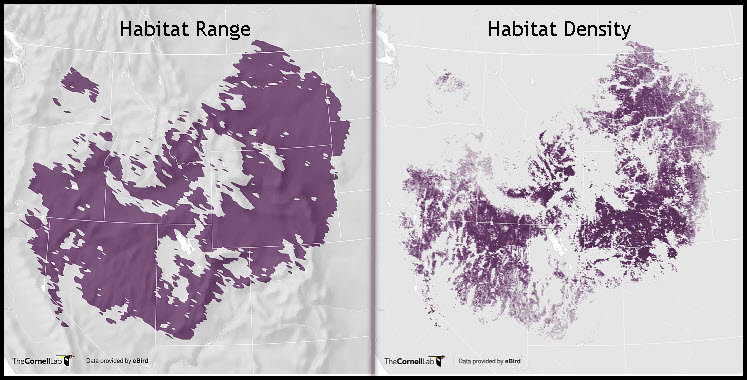

A Lek is a Complicated Place
Females are very picky. The future depends on their selection of a male.

Dissecting the male Sage-Grouse’s Display
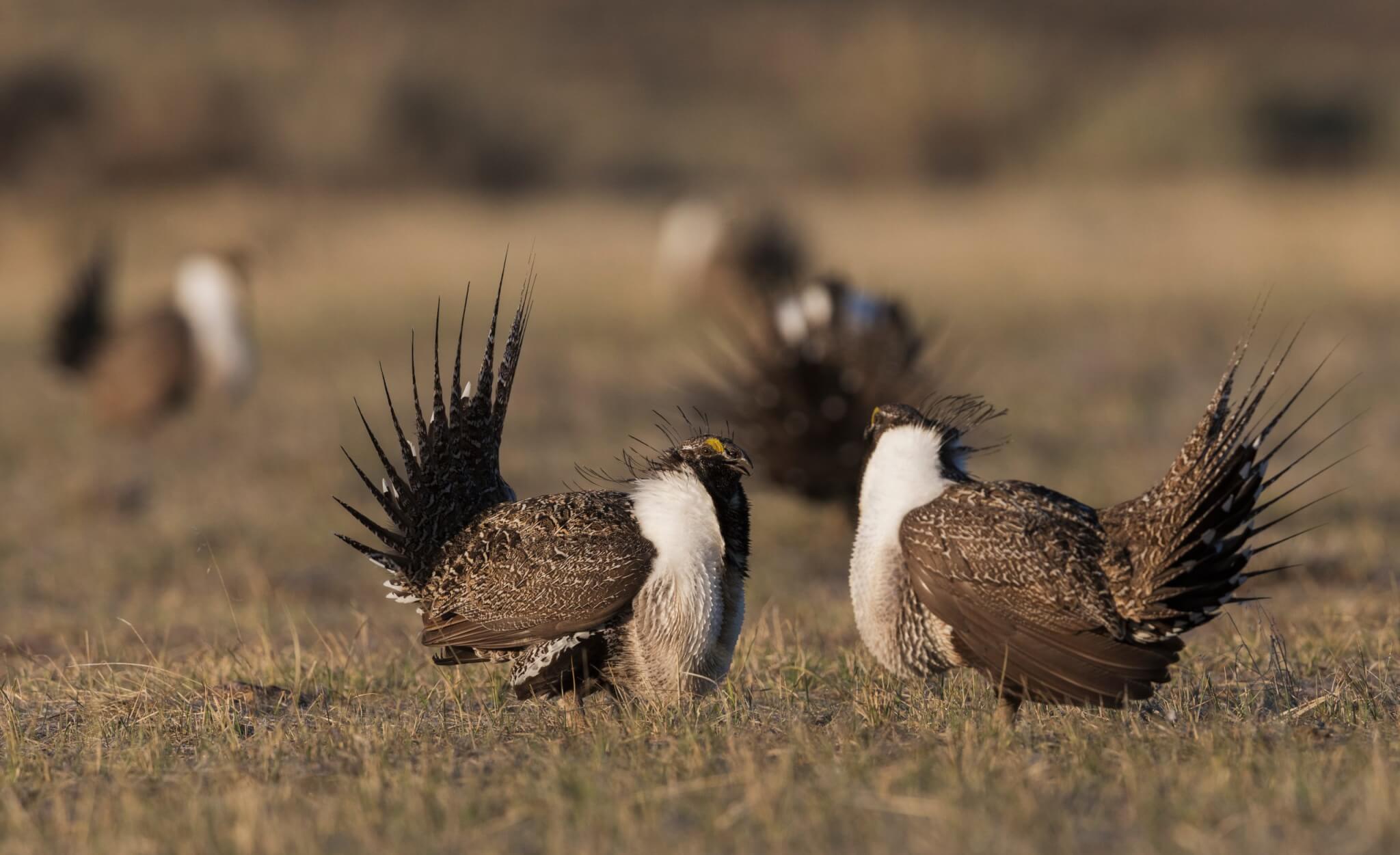
Greater Sage-Grouse males, facing off
The Elite Males of the Lek
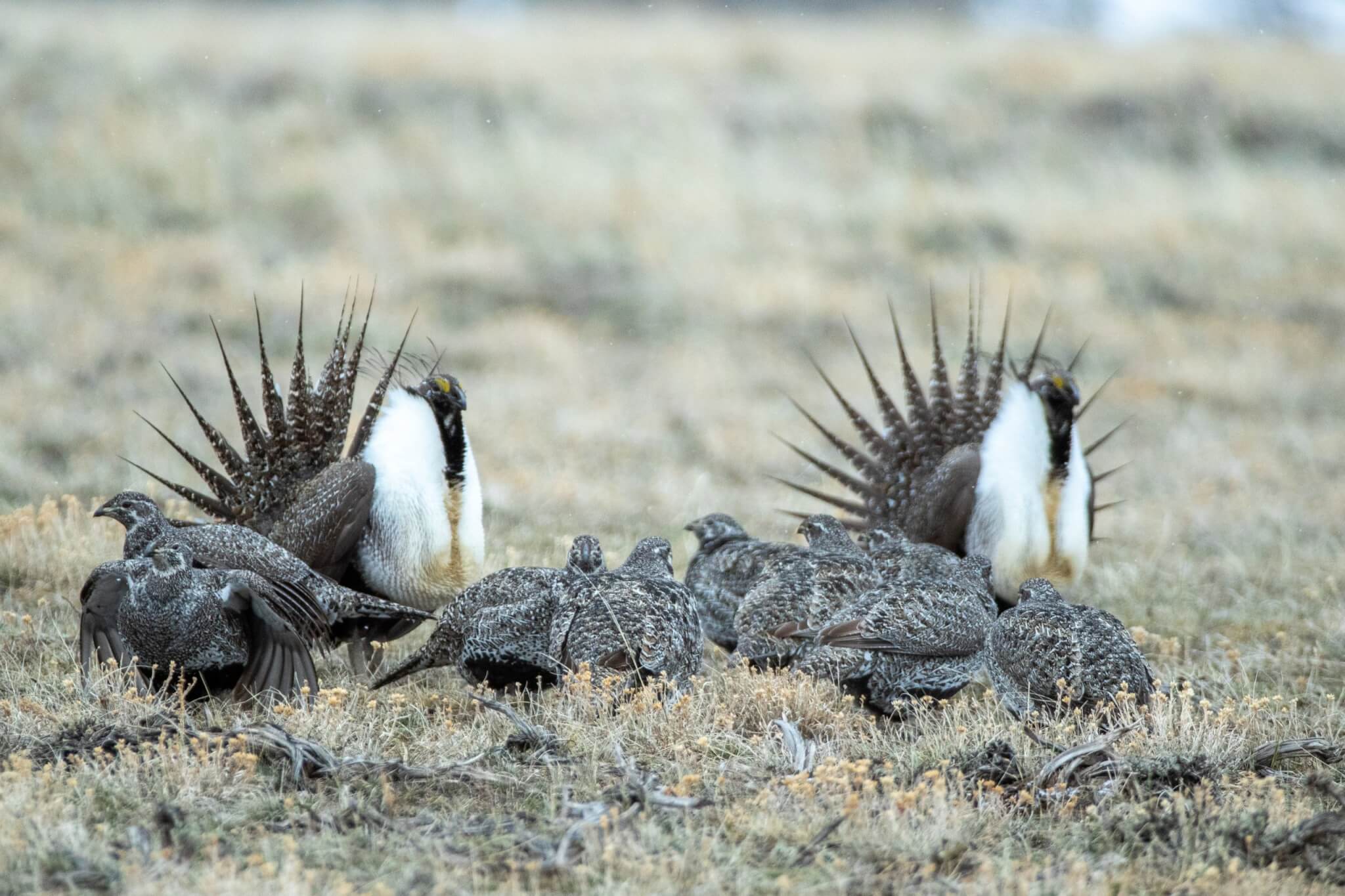
Sage Grouse taken in southern Wyoming
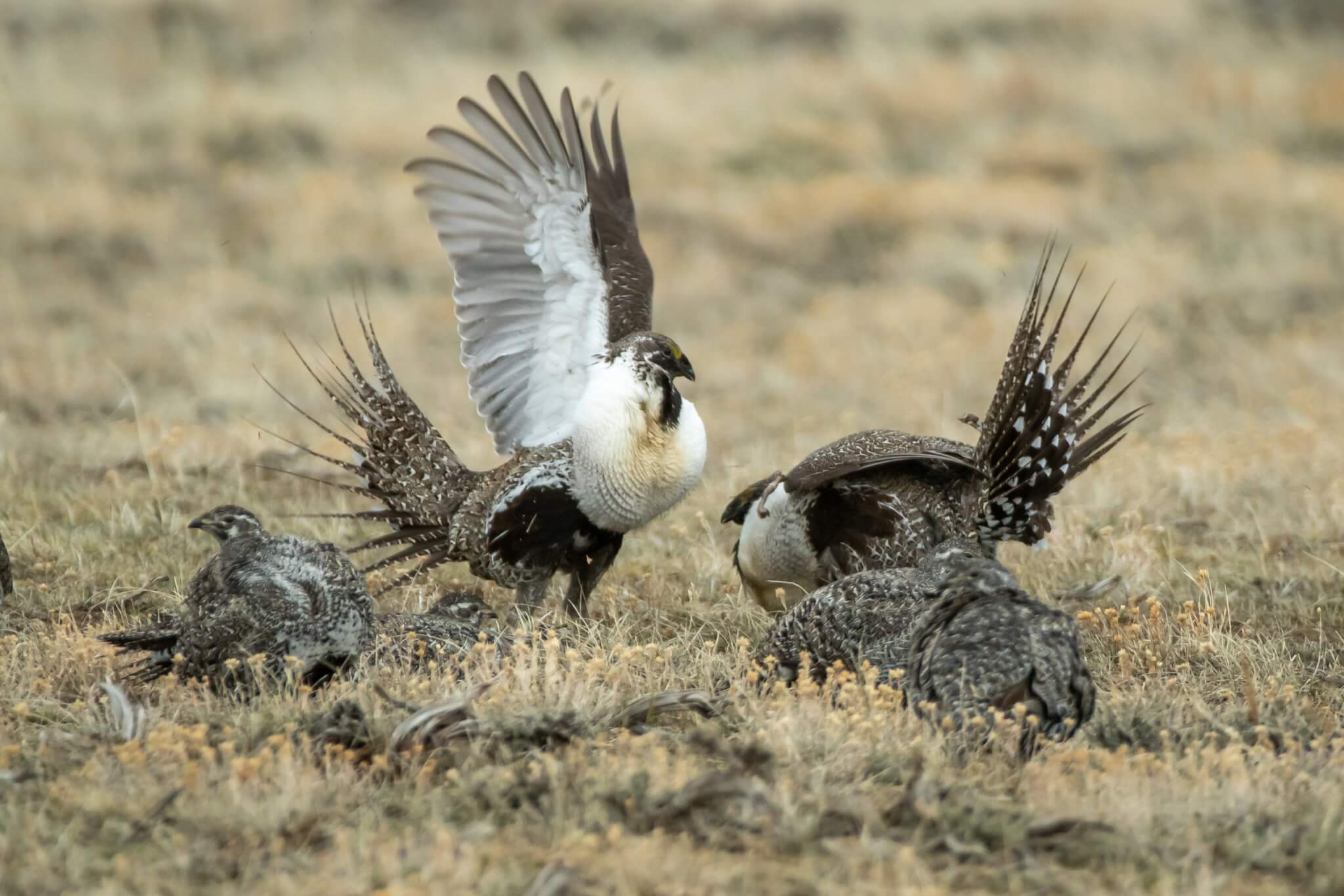
Sage Grouse sparing taken in Colorado
Greater Sage-Grouse Habitat Needs
- Large tracks of sagebrush “unfragmented landscape.”
- Typically, a treeless landscape
- Wet meadows during the brood-rearing season
- These areas are semiarid with frigid winters and summers that are hot
- For a Sage-Grouse a great landscape is greater than 230 square miles
- Research has shown that 99 percent of the leks are located in areas with less than 3% development (2013 research by USGS sage grouse scientist Stephen Knick
- Greater Sage-Grouse migrate, needs vast expanses of unaltered land.
- One of the longest migration is 100 miles from the Grasslands National Park in Saskatchewan, Canada, to the Charles M Russell National Wildlife Refuge in Montana.
- The Greater Sage-Grouse avoids development, densities of roads, power lines, pipelines, and communication towers.

Sagebrush is key to survival of the Greater Sage-Grouse
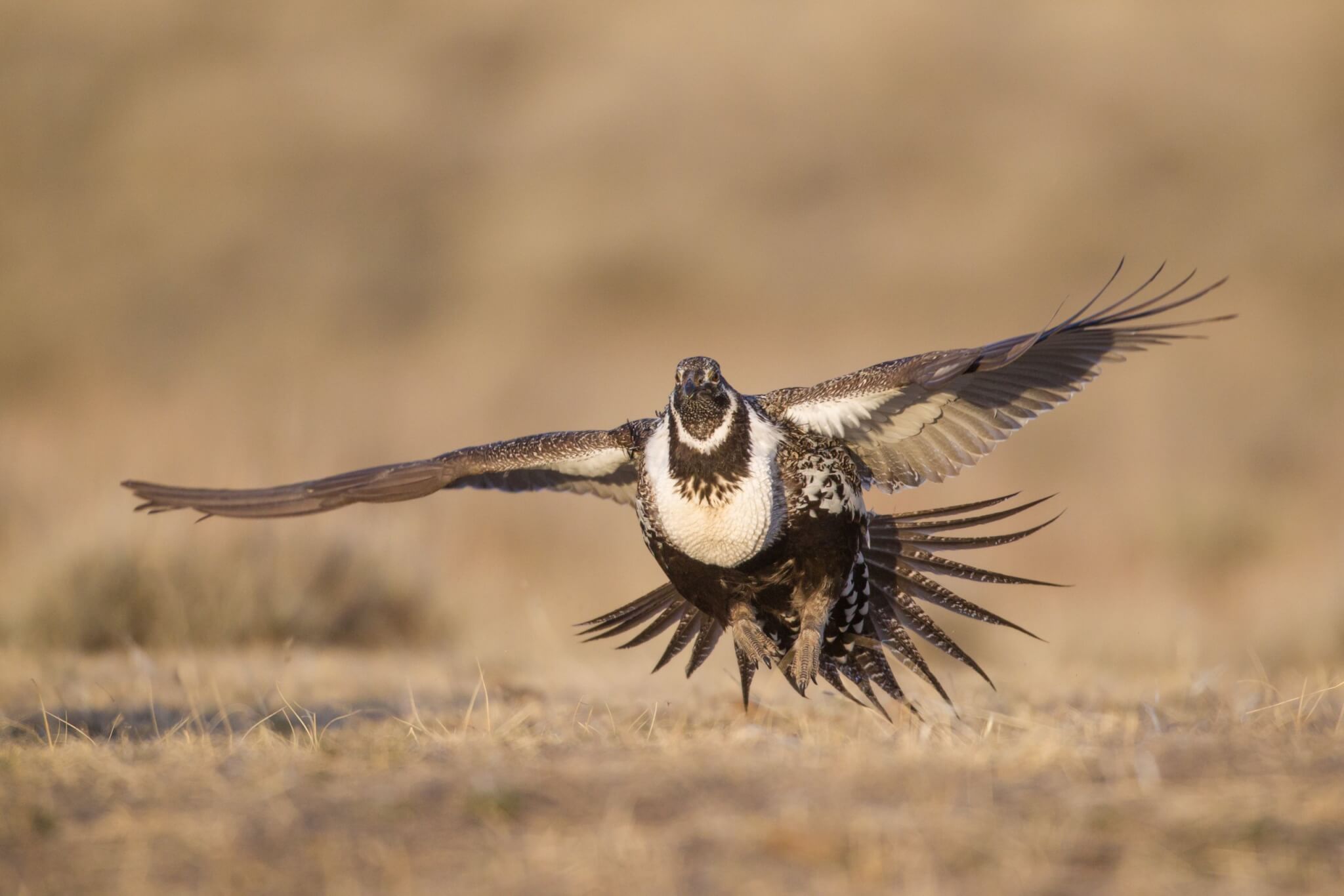
The Future
The global breeding population is roughly 150,000, with 6% in Canada and 94% in the U.S.
Research suggests that a sage-grouse population that utilizes only one lek typically requires over 75,000 acres of unfragmented sage cover. However, a fragmented group of Sage-Grouse that utilizes multiple leks may require over 250,000 acres of sage-covered landscape.
Fragmentation of sagebrush habitat has reached a point where less than 5 percent of sagebrush habitat lies more than 1.5 miles from a paved road
Unfortunately, it is challenging to locate vast sagebrush expanses that aren’t 1.5 miles from a road, fences, utility poles, and oil and wind pads.
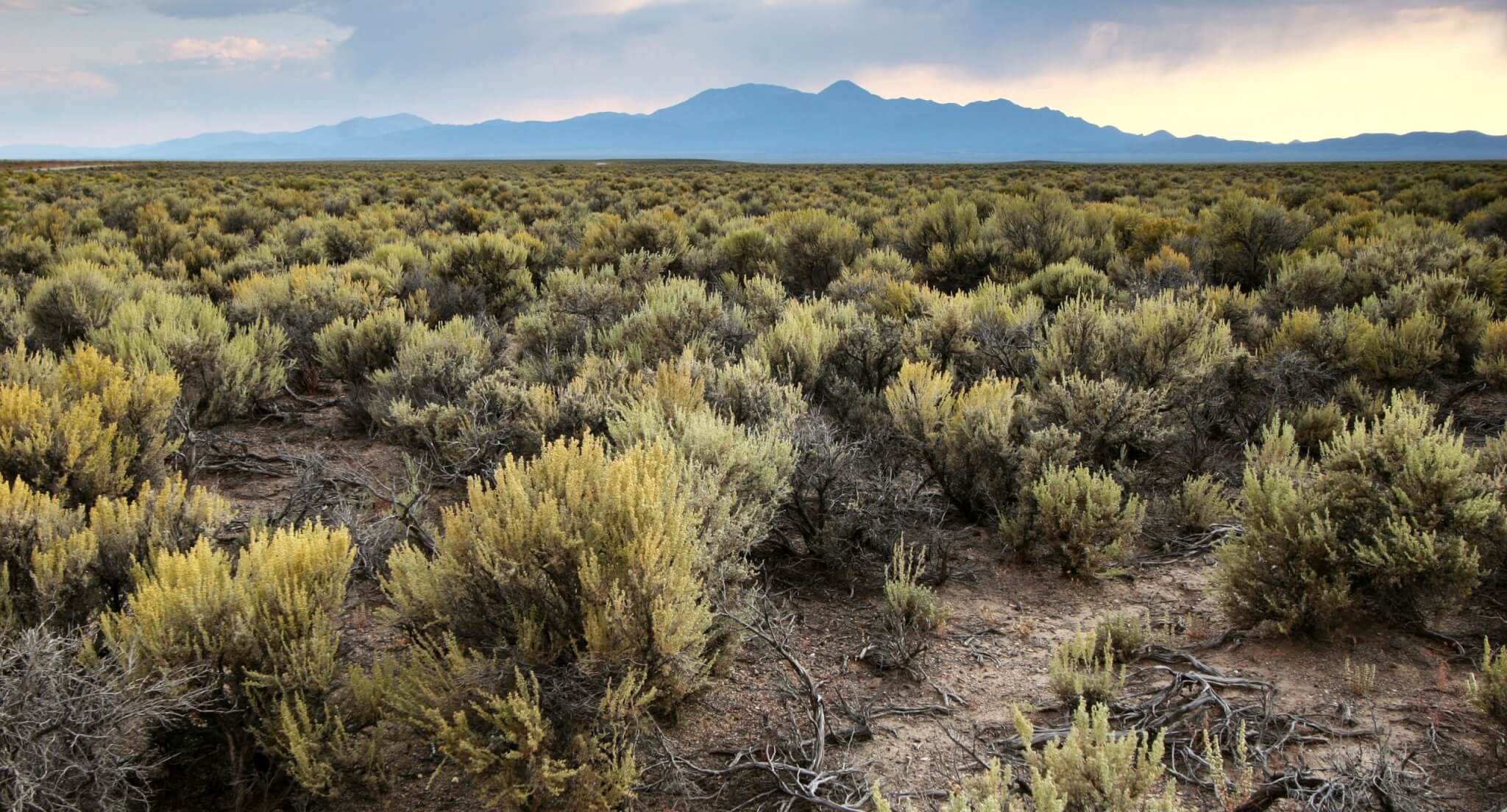
An unbroken landscape of Sagebrush is critical to the survival of the Greater Sage-Grouse


